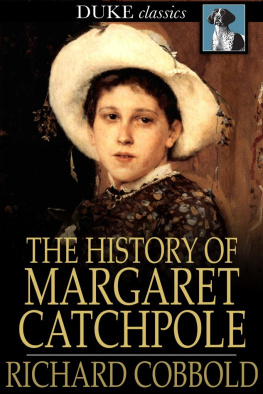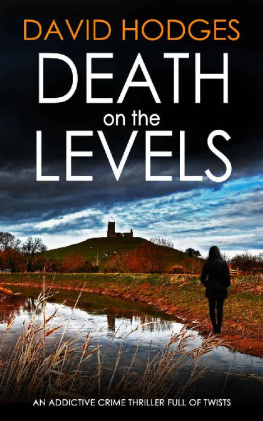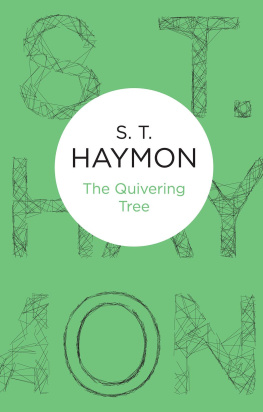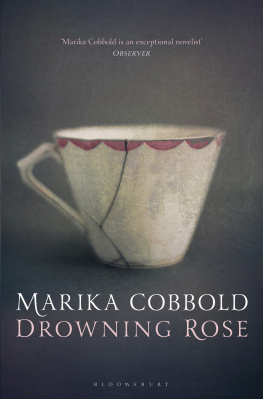
Cobbold & Kin
Life Stories from an East Anglian Family
The Cobbold family, its roots firmly planted in East Anglia, is most commonly associated with the brewing industry and with Ipswich Town Football Club. This, however, is only a small part of the story. Over the centuries, the Cobbolds and their kin have turned their hand to almost every imaginable field of endeavour. This richly-illustrated book relates the lives of thirty-two of the familys most interesting and colourful characters across eight broad subjects: from industry and agriculture to faith, from the arts to empire, from public service to scientific enquiry, and from sport to military service. Not all bear the name Cobbold but all are related to the family.
Drawing on the archive of the Cobbold Family History Trust, the book reveals not only the extraordinary breadth of the familys interests but also its geographical reach. It is not merely a collection of life stories from Suffolk and East Anglia but ventures to five continents and remote regions of the world. Seldom could a more diverse cast of characters have been assembled in the pages of one book and each biography is set against its own historical canvas. Together, they encompass almost every aspect of the human condition some tell of triumph over adversity, some are heartbreakingly tragic, others downright improbable.
Thomas Cobbold (1680 1752), founder of the brewery in 1723. Artist unknown. (Family members private collection.)

CONTENTS
In selecting images for this book every effort has been made to contact the holders of copyright material; any inadvertent omissions are regretted and will be corrected in future editions if the publisher is notified in writing.
FOREWORD by John Blatchly
I am delighted to have been invited to write something to introduce Clive Hodges Cobbold & Kin, having greatly enjoyed previews of several of his lively and compelling biographical essays. Eighteen of his thirty-two subjects have their reward, a tangible taste of immortality, with entries by other authors in the pages of the Oxford Dictionary of National Biography, but in that great work there is a formality of treatment by which Clive Hodges was not bound. The jacket text warns us not to expect too many brewers and Ipswich Town directors, and the mixture is far more eclectic. It is fascinating how many great men and women have Cobbold connections, their genes and that surname often discreetly hidden from sight. One is tempted to conclude that if you scratch the surface of a Cobbold life something great and glorious will emerge.
Around Suffolk, and certainly here in Ipswich, there are traces of Cobbolds everywhere. At the civic church of St Mary-le-Tower stands the churchyard cross for the martyred bishop of Melanesia (see ) and a headstone, mounted against the west wall of the south aisle, to Thomas Cobbold, the son of the founder, who brought the brewing from Harwich in 1746 and died in 1767. Walking in two very fine parks, Christchurch and Holywells, one cannot but be aware that Cobbolds have made them what they are for us.
I offer two anecdotes. The first headmaster to interview me for a Chemistry post in 1957 was N. G. L. Hammond of Clifton (see ). He carried my case to my room, a practice which I have tried to emulate since. Next morning at breakfast his immensely able children needed his help with their prep: Greek irregular verbs. I realised that Hammond had served with Greek guerrillas behind the lines in the Second World War and fell to wondering how regular their verbs had been.
Much later on a north Norfolk holiday, arriving to stay in a barn cottage at the Hall of the Daubeneys, I was greeted by my friend Peter Coke Paul Temple in the long-running eponymous radio series, but by then an antique dealer of distinction. He said that he was ruined, having paid far too much for two albums containing three hundred scissor-cut Valentines with poems in manuscript written below each. I took them into the cottage and looked for clues. The Ipswich Market Cross was unmistakable and recognising verses in the familiar hand of Elizabeth Cobbold instantly turned his ruin to modest riches, and a framed papercut of the Market Cross was my reward.
This antient Mart, fair Lady, shews
That commerce well her wealth bestows,
And give your Valentine to claim
A British Merchants honord name;
Then let the smiles of beauty crown
Integrity and bright renown.
INTRODUCTION
In the early spring of 2012, I was mopping up the research for my doctoral thesis, which is concerned with the political aspect of exploration in central Asia during the height of the Great Game, the shadowy cold war played out between Britain and Russia in the region. During the course of my studies I had encountered a Captain Ralph Patteson Cobbold who travelled widely across this dangerous landscape in the closing years of the nineteenth century Officially he was travelling purely for sport and recreation but he was undoubtedly spying for the Government of India. Having gleaned all I could about Ralph from the India Office Records at the British Library, from the National Archives, the Royal Geographical Society and even from the National Archives of India in New Delhi, there was one last place I felt I ought to look. I sent a hopeful email to the Cobbold Family History Trust and almost immediately received a reply from Anthony Cobbold, its keeper, inviting me to visit him.
I am now embarrassed to confess that, before I first visited the Trust, my ignorance of his family was complete save for that I had learned of Ralph. From the Trust, I learned a little more about his central Asian exploits and much more about other risky missions he undertook later. I immediately realised that here was a man who deserved a biography and, over lunch, I floated my idea. Anthony had other thoughts. He told me that he had approached Boydell & Brewer with a proposal for a biography of another notable Cobbold and that the reply had come that such a book might not have broad enough appeal. Instead, they had remarked that a wider book about the family would be better. Anthony had been beginning to think about who he could ask to write such a book, while I was looking for a project to take up after the conclusion of my studies. The timing of my visit was inspired and we both soon realised that our individual objectives complimented each other perfectly. At this early stage, however, I was unsure whether there would be sufficient family members of interest to warrant writing a book. An hour or two spent browsing the Trusts website when I returned home that evening soon dispelled this concern.
Anthony and I soon decided on eight broad themes or fields of endeavour and then set about populating each chapter with four subjects. This proved quite a challenge, not because of a paucity of good material but because of an abundance of it. After much deliberation we eventually settled on the following thirty-two life stories. The only absolute among our selection criteria was that each subject should be no longer with us. Beyond that, we sought to achieve a balance between Cobbolds and those from other families linked by marriage. That we have been unable to include more stories of the familys women is attributable to the patriarchal nature of past societies. A few of our subjects will be familiar to readers, but most will not. It was this that made the book so enjoyable both to research and to write for, at every turn, I discovered little-known tales of endeavour, tragedy and adventure.












